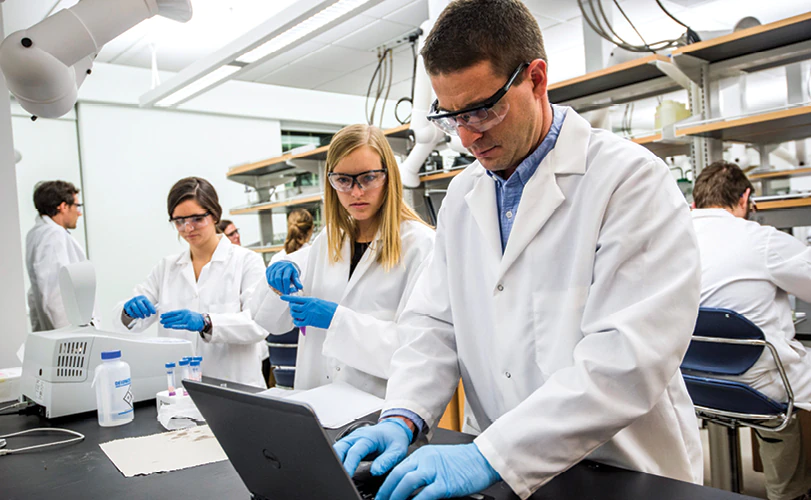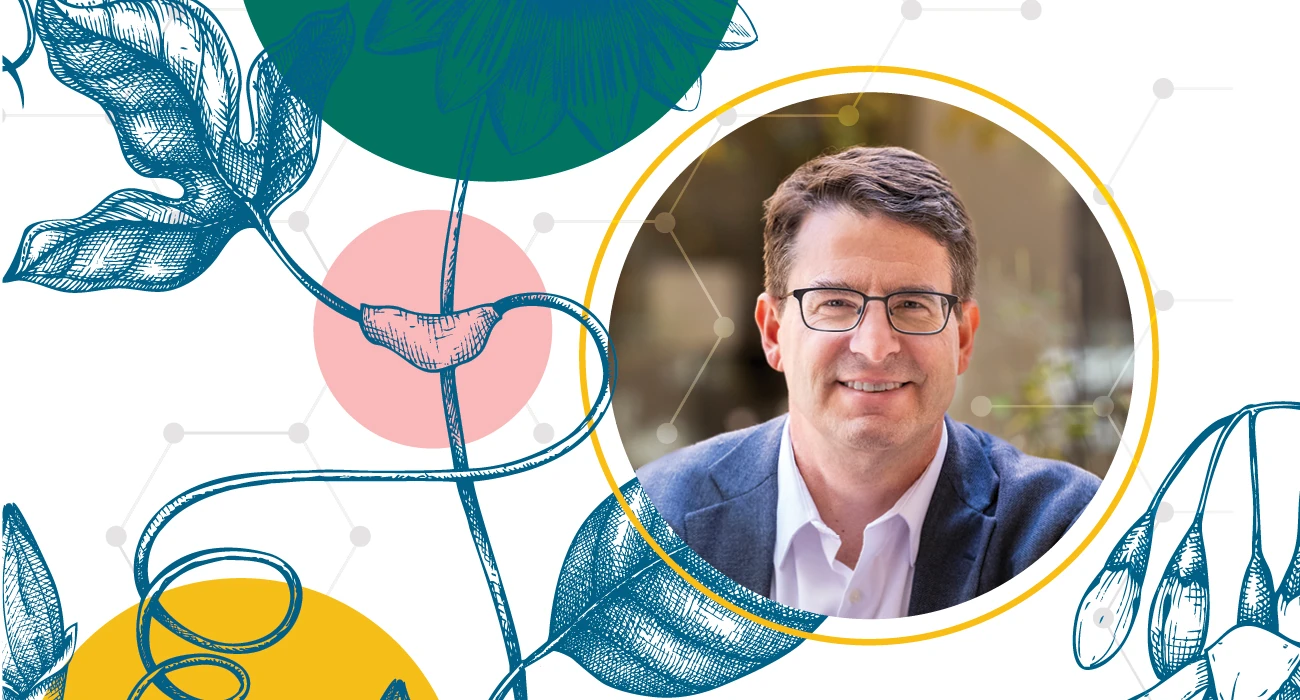Where Engineering and Public Health Meet
Dan Giammar wants to put himself out of business
“At heart, I’m an engineer, and I want to make the world better.”
Like many successful engineers, Daniel Giammar, the Walter E. Browne Professor of Environmental Engineering in the McKelvey School of Engineering, has found himself in the right place at the right time with the right experience to make an impact. The child of a mechanical engineer, who worked on scrubbers to remove acid rain-forming chemicals from coal-fired power plants, and a public school nurse, Giammar describes his career as an environmental engineer focused on issues affecting public health as “practically preordained.”
“When I was young, we spent our family vacations driving all over the country, camping in national parks and national forests, so a love of nature was part of how I grew up,” Giammar recalled, noting that he visited roughly 40 states before he was 12 without stepping on an airplane. “I remember drawing pictures of sad, dead flowers with acid rain falling on them, which was maybe a little disturbing, but also scientific, thanks to a father doing technology for the environment and a mother focused on public health. And that's what environmental engineers do. I learned a lot from their examples.”
I remember drawing pictures of sad, dead flowers with acid rain falling on them, which was maybe a little disturbing, but also scientific, thanks to a father doing technology for the environment and a mother focused on public health. And that's what environmental engineers do. I learned a lot from their examples.
As an undergraduate Giammar declared a major in civil engineering, thinking that chemistry wasn’t his cup of tea. After discovering that he liked chemistry when paired with environmental science, Giammar shifted to environmental engineering with an emphasis on aquatic chemistry.
“A key lesson I learned from my advisers was to stay true to fundamentals and to understanding the role of chemical speciation as it relates to metals at solid-water interfaces,” Giammar said. “I'm not a uranium person, not a lead person, not an arsenic person, not a chromium person. I’m an aquatic chemistry person. Applying that core set of tools and expertise in the chemistry of metals and how it impacts water systems has given me the opportunity to see what happens in my lab informing decisions made in the real world.”
Going unleaded
Giammar jokes that just as most parents can’t choose a favorite child, he can’t choose a favorite toxic heavy metal. Early in his career at WashU, he shifted his focus from uranium geochemistry and carbon sequestration to tackling the problem of lead in drinking water. Missouri has a long history of lead mining, often with negative environmental and health consequences. Giammar dug into lead in soil and its eventual leaching into water.
In 2004, lead levels far above the regulatory limit were discovered in Washington, D.C.’s drinking water, prompting widespread concern — especially around the long-term damage lead contamination could cause in children — and an investigation by the U.S. House of Representatives.
True to his roots, Giammar saw a crisis impacting public health where the underlying cause was environmental chemistry, and he knew he could help.
“It was somewhat serendipitous that I had been spending several years really going deep and trying to understand the chemistry of how lead behaves in water, thinking about soils,” Giammar said. “Then, something in drinking water comes up, and I know these reactions. I understand this system. This is an area where my lab can contribute our expertise.”

Since the 2004 lead crisis, Giammar’s group has grown into a leading lab on lead corrosion and related issues around clean drinking water. His team has continued to help mitigate lead in drinking water, primarily through corrosion control, which happens at water treatment plants and can benefit many households. Giammar also served as a technical expert to the Natural Resources Defense Council on a civil suit that was settled for $87 million in March 2017 to provide funds for the replacement of all lead pipes in Flint, Michigan.
“Until we spend the tens of billions of dollars required to get all the lead pipes out of the ground, we’re going to need mitigation,” Giammar said. “After Flint, we’re paying more attention to monitoring lead in drinking water to understand the issue. With that attention and recent investments in infrastructure, I look forward to the day we put ourselves out of business and have solved all drinking water issues related to lead. I’m hoping I’ll see that in my career.”

Dan Giammar
Bachelor of Science in Civil Engineering
- Carnegie Mellon University
- Adviser: David Dzombak
Doctor of Philosophy and Master of Science in Environmental Engineering
- California Institute of Technology
- PhD thesis topic: Uranium geochemistry at mineral surfaces
- Adviser: Janet Hering
Cultivating collaboration
Giammar was recently appointed the inaugural director of WashU’s Center for the Environment, an interdisciplinary hub of environmental research launched as part of the university’s Here and Next strategic plan. As director, Giammar fosters collaborative research across the university and beyond, drawing researchers from engineering, environmental science, public health, social work and more.
“If we want to do research that solves the world’s problems, we have to collaborate,” Giammar said. “It’s energizing for lifelong learners to work with other experts and learn what they know. As we’ve moved more into interdisciplinary research, we need people who have deep expertise and bring that to a team.”
The strategic plans recently launched by McKelvey Engineering and WashU open what Giammar sees as a potentially game-changing window of opportunity.
“The societal needs have never been greater, especially for the challenges of climate change and threats to water quality and air quality,” Giammar said. “With universitywide strategic planning, we have the broad investment to solve these big problems. I’m excited to see people working together in creative ways in air quality and public health, in sustainable food systems and nutrition, and in connections between biodiversity and infectious disease, like tick-borne diseases and zoonotic disease. These are areas of strengths where we have huge opportunities to make an impact.”

